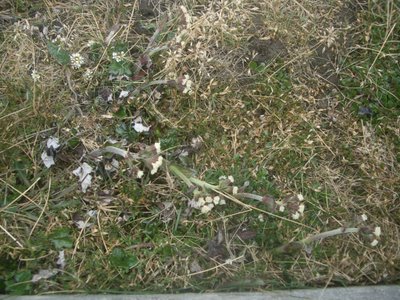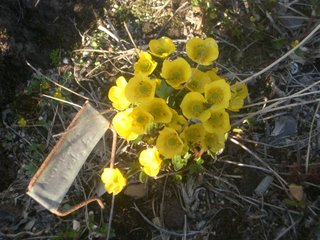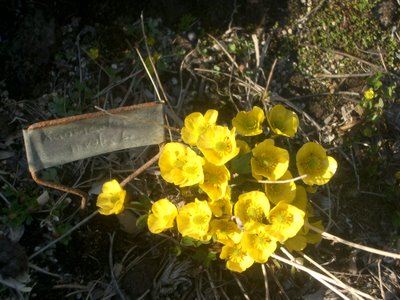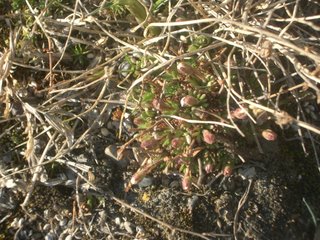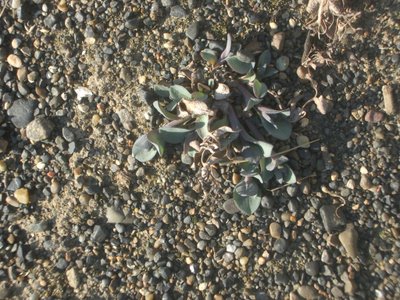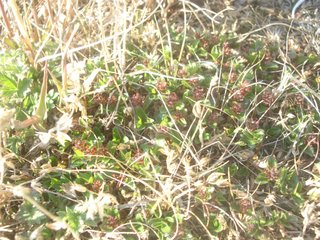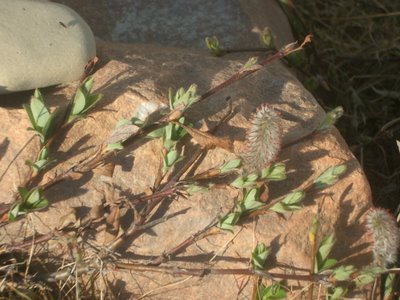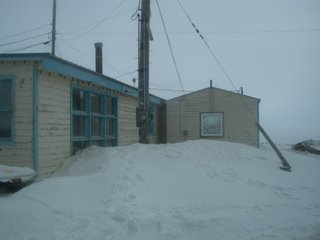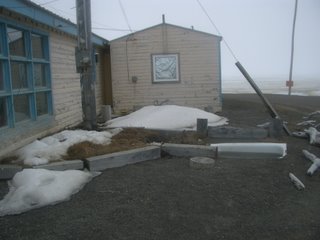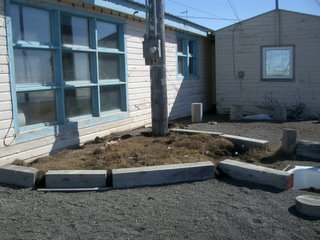
The Tundra Garden is at least in part educational in purpose; I like having it handy so I can take people outside to show them a plant in real life rather than in a book. Because of that (and because I am not that fond of the Zen garden look outside my house) I am quite liberal regarding volunteers. I've felt otherwise in other gardens elsewhere, but here they get to stay. It is interesting to watch the succession process in gravel, as well.
The first plants which show are Cochlearia officinalis L. which are otherwise known as Scurvy Grass. Why grass I'm not sure, since they don't look the least bit like grass. When they first make their appearance in the spring, they look a bit scrofulous until the new leaves outgrow the foliage from last year.
After they grow some leaves and begin blooming, they are pretty little white things, and smell quite nice on a warm day if you can get your nose close enough. They come in various sizes. As far as I can see, they seem to grow bigger for a number of years. Eventually they put up a longer flowerstock and then die.
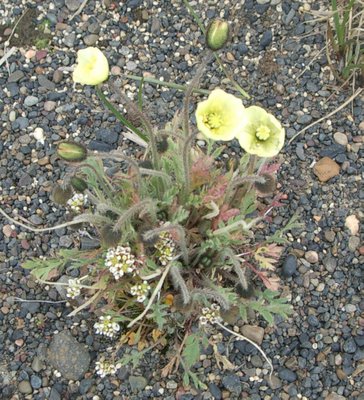

s you can see I let them grow where they show up, including mixed into clumps of other flowers, like the poppies. My favorite is an area where really nothing else has taken hold yet. It's between our house and the road around it on the pad. The cochlearia have taken root all over the space, and they look like petite doilies scattered on the ground when they are all in bloom. There are a few clumps of a small grass showing up now in the wake of the cochlearia.

I've been encouraging these plants with watering and foliar feedings. I was using fish emulsion, but it made the garden stink and wasn't always available. So I switched to Miracle Gro.
Before anyone goes ballistic, I've been using compost since I was a kid. My parents had about 5 acres in lawn, which needed the leaves raked, and the place wasn't called Tall Trees for nothing. Then I got ponies and boy did we have great compost. Alas, composting doesn't seem to be an option up here unless I want to rent heated indoor space. Things freeze here, and once the pile is big enough, and moist enough, they don't thaw. I do have a compost pile here. The pumpkin from Halloween 1996 didn't look any different than the one from 2005 before the snow fell. As an archaeologist, I can attest to the fact that organic material can stay frozen with minimal decay for hundreds of years here. Call me impatient, but since I don't expect to live that long.... Miracle Gro. I'd worry more if the runoff didn't go directly into a sewage lagoon.
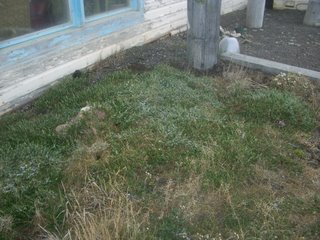 The garden was well-sprinkled with white. The willow leaves held the snow, so that most of the garden was frosted with white crystals. It was really quite lovely, although the fact that I was going to be spending a rather cold day in the field, with students (some of whom were probably under-dressed and would therefore require watching for hypothermia) got in the way of true appreciation of the aesthetics of the situation.
The garden was well-sprinkled with white. The willow leaves held the snow, so that most of the garden was frosted with white crystals. It was really quite lovely, although the fact that I was going to be spending a rather cold day in the field, with students (some of whom were probably under-dressed and would therefore require watching for hypothermia) got in the way of true appreciation of the aesthetics of the situation.



